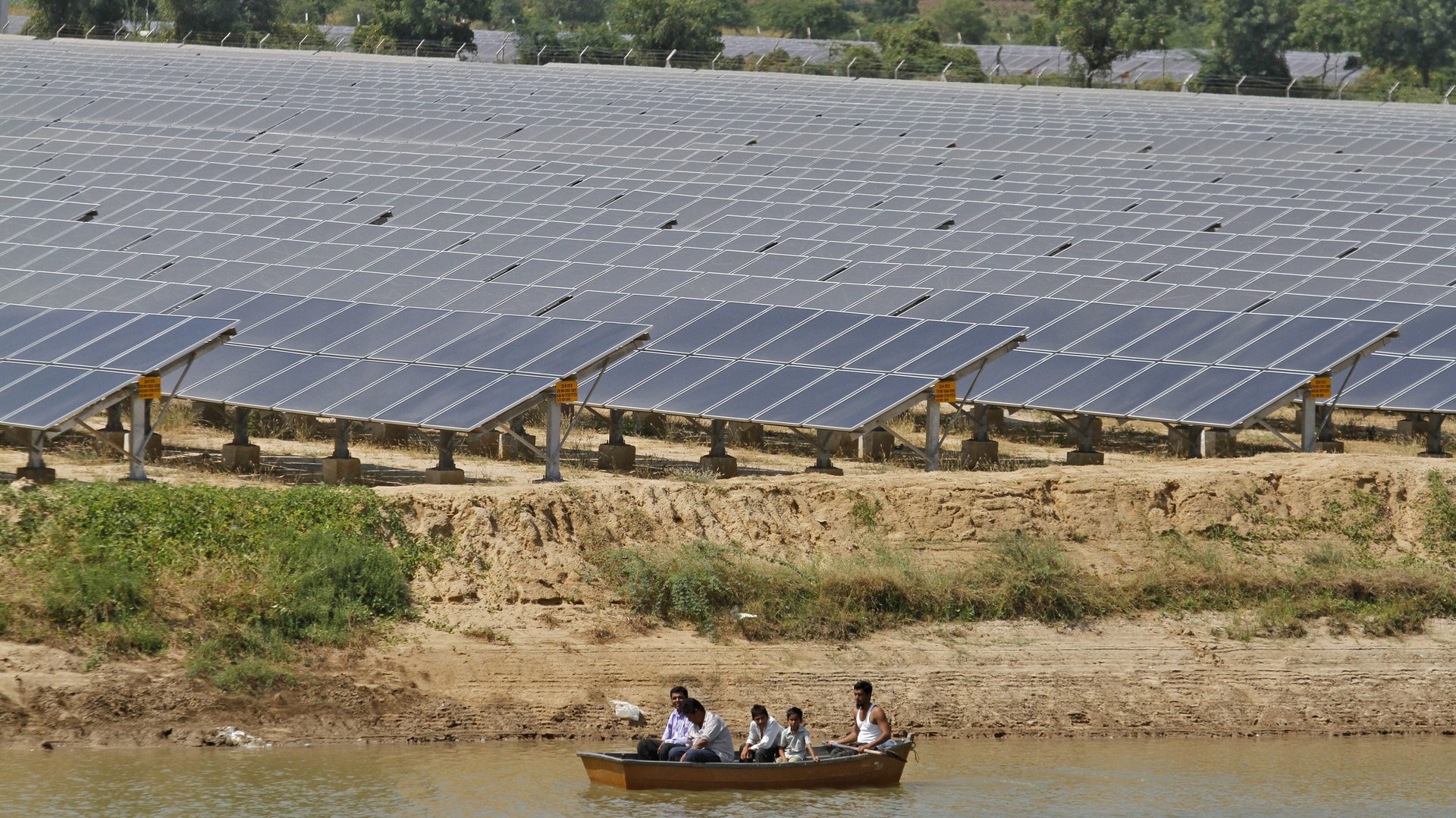India is missing out on the huge potential to use its green energy for mining cryptocurrency
On the face of it, India’s rising status as a green-energy powerhouse and its small, discrete, and energy-guzzling cryptocurrency miner community are an explosive match waiting to happen.


On the face of it, India’s rising status as a green-energy powerhouse and its small, discrete, and energy-guzzling cryptocurrency miner community are an explosive match waiting to happen.
However, a lack of regulation and expensive power, especially given the country’s tropical climate, hinder such prospects.
Hurdles before India’s cryptocurrency miners
India’s digital coin ecosystem is rapidly expanding. While there is no official data on the extent of crypto players in the country, more than 100 million Indians are estimated to be part of the $3 trillion global community. It ranks second on the world cryptocurrency adoption index, according to Chainalysis.
Cryptocurrency mining, the complex process of creating new virtual coins through some high-level mathematical equations, is one of the ways to own these assets. However, it is still a small subset of the sector in the country. And there are several reasons for this.
For a start, digital assets are technically illegal in India.
Experts say there are a considerable number of miners in India—up to 300 people and 40 organisations, according to some—discretely producing cryptocurrencies like bitcoin and ethereum. They operate on a small scale due to a lack of regulatory clarity.
“It is a disorganised sector,” said Raj Kapoor, founder of industry body India Blockchain Alliance. “Everybody is worried about a clampdown on cryptos. It is a great opportunity from a growth perspective, but India is missing the bus out here.”
A long-running dialogue between industry experts and the government over the ecosystem’s benefits and pitfalls has failed to bear fruit till now, he said.
The second hurdle faced by virtual coin players in India stems from the process of crypto-mining itself: It requires highly specialised computing equipment that consumes vast amounts of power and produces a great deal of heat. Among the thousands of virtual tokens in circulation around the world today, bitcoin alone is said to use up more energy than the entire nation of Argentina.
This makes crypto-mining better suited to colder climates. In a tropical country like India, only a few states—Jammu and Kashmir and Himachal Pradesh among them—have temperatures suitable for the process.
It also often comes down to places with the cheapest energy.
In India, power typically costs between Rs5.20-8.20 (7-11 cents) per kilowatt-hour on average each year. In Kazakhstan, by contrast, where many crypto-miners fled following a Chinese crackdown earlier this year, the cost is around 4 to 5 cents.
Yet, Indian crypto players can overcome this hurdle by upgrading their green credentials. And that’s where the country’s changing energy portfolio comes in.
India’s green energy
India is the world’s fourth-largest solar power-producing nation. It is a top candidate for growth in sources of renewable energy, according to consultancy EY.
“Mining may not be profitable in India because of the electricity costs,” Nischal Shetty, co-founder of Indian cryptocurrency exchange WazirX, told Quartz in July. “If you get into renewable sources of energy like solar panels, it may be cost-effective.”
Electricity generated through solar power can avoid putting pressure on the national grid. The initial outlay aside, miners can produce cryptocurrencies using this form of energy at minimal cost—a photovoltaic farm can pay for itself in about two years, Kapoor said.
More than half of the country’s power requirement of 817 GW by 2030 will be met by clean energy—up to 280 GW by solar energy alone, according to India’s central electricity authority.
In the past six years, India has invested around Rs4.7 lakh crore in renewable energy space, with Rs1 lakh crore expected to be invested annually till 2030.
Since India’s crypto-mining community is still relatively small, even if it taps into the green power grid for its vast energy needs, it will hardly cause a disruption.
In any case, India experiences considerable wastage—nearly 20% of all electricity produced annually, according to experts—due to technical and commercial reasons, according to the power ministry.
“Not all of the wind energy is being utilised,” said Siddharth Sogani, founder of the cryptocurrency and blockchain research company CREBACO Global. “A lot of it is getting wasted.”
A strategy to fix this inefficiency will be a win-win for both the government and cryptocurrency miners.
Besides, cryptocurrency players are themselves are moving towards a more energy-efficient “proof-of-stake” algorithm from the “proof-of-work” protocol—the former can be operated from a laptop while the latter requires specialised computing equipment.
Bitcoin mining will still be profitable for more than a century, Sogani said of India’s potential to become a global hub for crypto mining. “We shouldn’t wait. The infrastructure should be there.”
An entire new virtual world of possibilities may be waiting to be tapped in India if only regulatory knots, energy needs, and efficiencies are synergised.